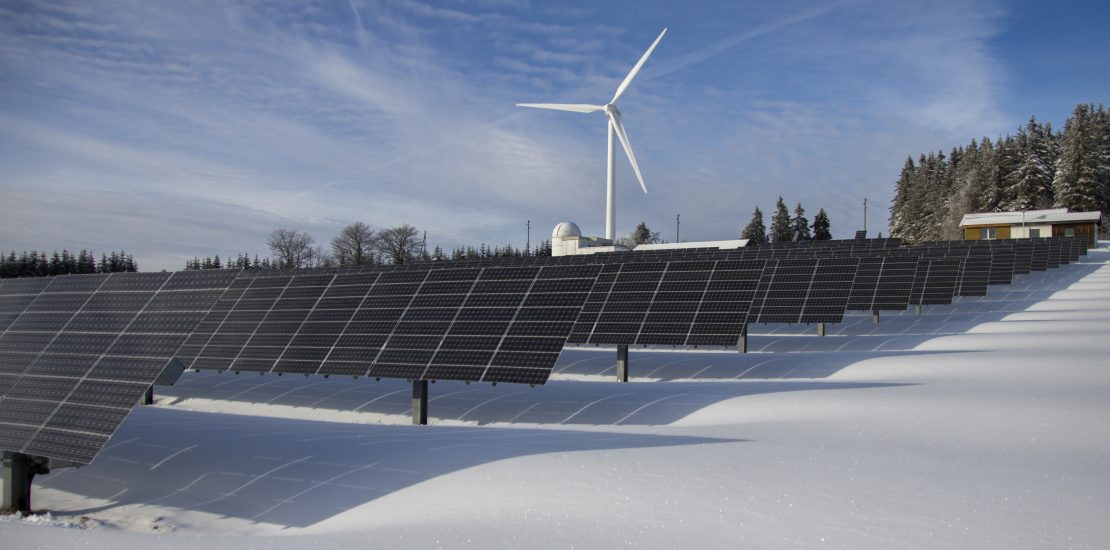Overview
In today’s power systems, solar and wind power still have limited impact on grid operation. The International Renewable Energy Agency (IRENA), analyzing the effects of the energy transition until 2050 in a recent study for the G20, found that over 80% of the world’s electricity could derive from renewable sources by that date. Solar photovoltaic (PV) and wind power would come at that point account for 52% of total electricity generation.
- India accounts for approximately 4% of the total global electricity generation and contributes 4.43 per cent to the global renewable generation capacity amounting to 2,011 GW in 2016.
- India’s renewable energy installed capacity is 58.30 GW as per the recent government data. The government has an ambitious target of raising it to 175 GW by 2022, including 100 GW of solar and 60 GW of wind energy.
- The International Energy Agency’s World Energy Outlook projects a growth of renewable energy supply to 4,550 GW in 2040 on a global basis.
- As of July 2017, total renewable power generation installed capacity in the country stood at 103.92 GW, which is 31.2 per cent of the full installed capacity.
- The growth in the electricity storage market to 2030 is not likely to be a one-horse race. However, Lithium-ion (Li-ion) batteries are likely to dominate the EV market.
- Hydropower forms the largest source of energy, constituting over 43 per cent of the total renewable power generation installed capacity.
- A Hydropower revival policy is underway which amongst others is likely to include the classification of all hydropower projects as renewable energy.
- Among the different sources of renewable power in India, the CAGR in installed capacity over FY07–*FY18 was 2.32 per cent for hydropower.
- There is a twelve per cent for other renewable energy sources, supported by the commencement of solar capacity addition since 2012.
- The Government of India is projecting a rapid 17.04% CAGR increase in other RES installed capacity to 275 GW by 2027 supported by a surge in solar power capacity addition.
- Pumped hydro storage currently dominates total installed storage power capacity, with 96% of the total of 176 GW installed globally in mid-2017. The other electricity storage technologies already in significant use around the world include thermal storage, with 3.3 GW (1.9%); batteries, with 1.9 GW (1.1%) and other mechanical storage with 1.6 GW (0.9%).
- High-temperature sodium-sulfur (NAS) and sodium nickel chloride batteries will also become much more affordable. Their installed cost could fall 56-60% by 2030, at the same time that their performance improves.
- Flywheels could see their installed cost fall by 35% by 2030. Compressed air energy storage (CAES), although based on a combination of mature technologies, could see a 17% cost decline by 2030.
- Materials availability is unlikely to be a constraint on the growth of battery electricity storage technologies in the period to at least 2025. Systems for the end-of-life recycling, reuse, and disposal of battery packs are being tested and will need to scale in the 2020s.
- In terms of the services battery electricity storage systems could provide, the economics of behind-the-meter storage opportunities — notably when paired with new PV installations — could make this application the largest driver of battery storage growth. Behind-the-meter storage could become the primary use case for 60-64% of total BES energy capacity in stationary applications in 2030.
- The cost reduction potential for new and emerging electricity storage technologies is significant. The total installed cost of a Li-ion battery could fall by an additional 54-61% by 2030 in stationary applications.
Source:
- www.ibef.org
- www.irena.org
- www.pexels.com






